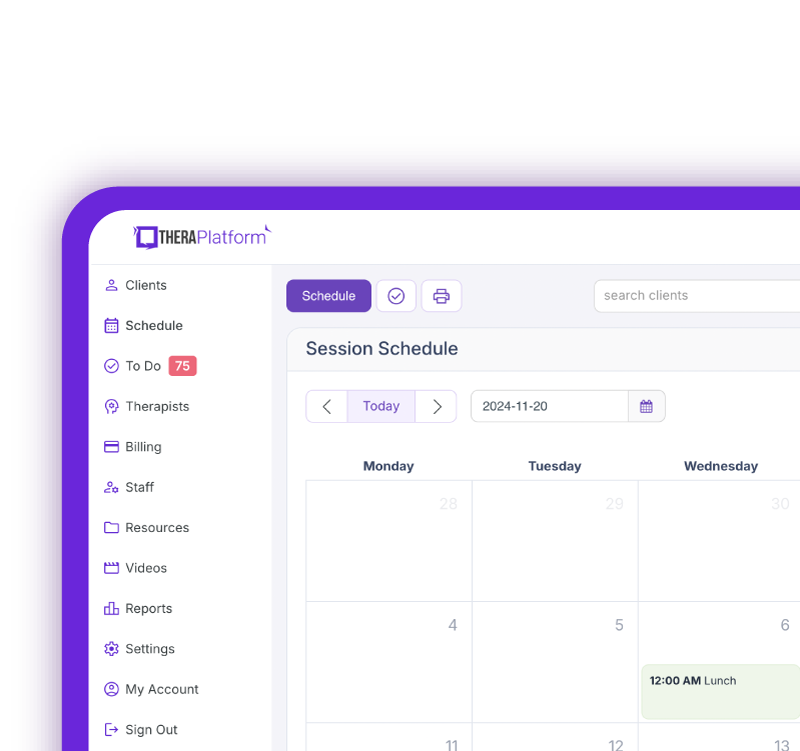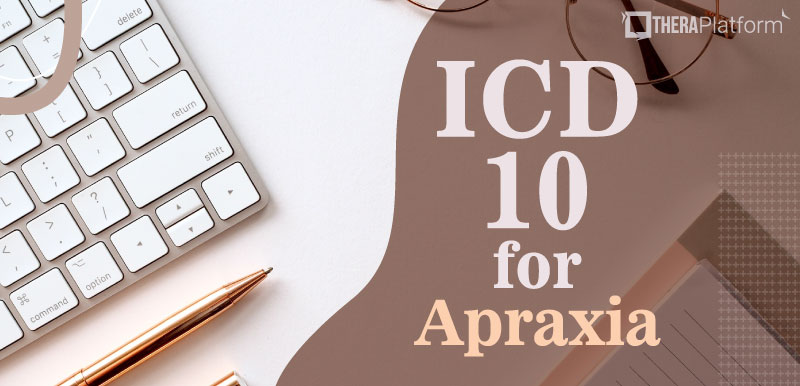ICD-10: Dysarthria

Dysarthria ICD 10 code, R47.1, is used by Speech-Language Pathologists for diagnosing a motor speech condition that can occur with many other speech and language disorders. Inclusion and exclusion criteria and signs and symptoms of Dysarthria will be explained in this blog.
Summary
- ICD-10 Code R47.1 is used by Speech-Language Pathologists (SLPs) to diagnose dysarthria and anarthria, except when the condition follows a cerebrovascular event (in which case I69 codes should be used). Enrolling in an insurance billing course for therapists can help providers enhance their knowledge.
- Dysarthria is a motor speech disorder caused by muscle weakness, often resulting in slurred, slow, or imprecise speech. It can co-occur with other speech and language disorders and has various causes including neurological diseases, medications, and brain injuries.
- SLPs must differentiate dysarthria from apraxia, as the former is related to muscle weakness while the latter involves motor planning issues. Proper diagnosis requires thorough assessments like oral motor exams, speech samples, and standardized tests.
- By leveraging an EHR like TheraPlatform for efficient documentation and claim submission, therapists can tackle billing with ease.
→ Click here to enroll in our free on-demand Insurance Billing for Therapists video course [Enroll Now]
According to the American Speech-Language Hearing Association (ASHA), Dysarthria can be defined as “a speech disorder caused by muscle weakness. It can make it hard for you to talk. People may have trouble understanding what you say.”
Whether you work with the pediatric population or with adults, as an SLP you’re likely to have at least a few clients on your caseload who have Dysarthria. There are a wide variety of causes for the speech disorder, including certain medications, brain injury, and various syndromes or disorders (including Cerebral Palsy and Parkinson’s Disease).
Streamline your insurance billing with One EHR
- Claim batching
- Auto claims
- Automated EOB & ERA
- Real-time claim validation
- Real-time claim tracking
- Aging and other reports

Because Dysarthria so frequently occurs with other speech and language diagnoses, SLPs need to understand the nature of the speech disorder and how to properly diagnose it.
Being knowledgeable about Dysarthria can also help Speech-Language Pathologists ensure they are following Medicaid and ASHA guidelines to document an ICD-10 code for certain clients to the highest degree of specificity.
Here’s what you need to know about Dysarthria, including what ICD-10 code to use for the disorder, criteria symptoms of Dysarthria, and the top-recommended resources to guide your treatment.
What is Dysarthria ICD 10 code?
SLPs are required to use ICD-10 codes when diagnosing clients and charging procedures. To stay compliant with HIPAA regulations and for payment by Medicare, Medicaid, and private insurance companies, therapists must use the most accurate, specific ICD-10 codes. R47.1 is the Dysarthria ICD-10 code to use when diagnosing a client.
According to the 2022 list of ICD-10 CM Diagnosis Codes related to Speech, Language, and Swallowing Disorders by the American Speech Language Hearing Association (ASHA), the Dysarthria ICD-10 code R47.1 should be used for a diagnosis of dysarthria and anarthria. This excludes dysarthria following cerebrovascular disease (I69. with final characters -22 should be used in that case).
The code for Dysarthria falls under the area of “Symptoms and signs involving speech and voice”.
When giving the diagnosis of Dysarthria ICD-10 R47.1, SLPs should be knowledgeable about the signs and symptoms of this speech disorder. This includes knowing how Dysarthria differs from other motor speech disorders, such as Apraxia.
Watch this video to learn common insurance billing struggles and solutions
→ Start My Free Trial
→ Start My Free Trial
Signs and symptoms of Dysarthria
The Mayo Clinic reports, “Dysarthria occurs when the muscles you use for speech are weak or you have difficulty controlling them. Dysarthria often causes slurred or slow speech that can be difficult to understand.”
Common causes of Dysarthria include:
- Disorders affecting the nervous system
- Conditions that cause weakness of oral/facial musculature or facial paralysis
- Certain medications
In the pediatric population, Dysarthria may be seen in children who have diagnoses such as Cerebral Palsy, Down Syndrome or other genetic disorders, and those who have experienced a traumatic brain injury (TBI) or a brain tumor.
SLPs working with adults may see signs of Dysarthria in those individuals who have had a stroke, TBI, or a progressive neurological disease such as Parkinson’s Disease, Amyotrophic Lateral Sclerosis (ALS), and Muscular Dystrophy.
Dysarthria is not to be confused with another speech disorder known as Apraxia.
When giving a diagnosis of Dysarthria, it is important for SLPs to remember that this speech disorder is characterized by a weakness or oral musculature. This differs from Apraxia, which is a motor planning speech disorder in which sound errors are typically inconsistent and may be atypical.
Characteristics of Dysarthria include:
- Reduced precision during articulation of speech sounds
- Decreased speech intelligibility
- Slow speech
- Slurred speech
- Reduced movement of oral-facial muscles such as lips, tongue, and jaw
- Atypical intonation/monotone
- Abnormal or inconsistent speech volume
An individual does not have to demonstrate all of the above symptoms to have a diagnosis of Dysarthria. Clients with Dysarthria may demonstrate any number of these signs. The severity of a client’s Dysarthria can range from mild to severe.
Dysarthria can co-occur with other speech and language disorders. For example, a child may have both a mixed receptive-expressive language disorder and Dysarthria. An adult who has had a Cerebrovascular Incident may have Aphasia as well as Dysarthria.
Practice Management + EHR + Telehealth
Mange more in less time in your practice with TheraPlatform

Prevalence of Dysarthria
According to ASHA, the true overall incidence and prevalence of Dysarthria are not fully known.
There are several estimates of the prevalence of Dysarthria as it is associated with common neurological diagnoses:
- 8% to 60% of those with Stroke
- 10-65% of individuals with TBI
- 70% to 100% in those with Parkinson’s disease
Childhood Dysarthria is estimated to be prevalent in 1 per 1,000 children at 4 to 8 years old, according to research.
When not to Use the ICD-10 Code R47.1 for Dysarthria
SLPs are advised to use the ICD-10 code R47.1 for Dysarthria if the diagnosis is related to a progressive neurological disease, nervous system condition, or medication.
If the client is showing signs of Dysarthria following a cerebral infarction, cerebrovascular disease, intracerebral hemorrhage, or subarachnoid hemorrhage, among certain other neurological infarctions, a different series of ICD-10 codes should be used. These codes begin with I69.
SLPs should refer to the Center for Disease Control’s (CDC’s) ICD-10 lookup tool each year to ensure they are using the most accurate, up to date ICD Code
The Dysarthria ICD-10 code can be used for a client in conjunction with codes that indicate language disorders, such as F80.1 Expressive Language Delay or F80.2 Mixed Receptive Expressive Language Disorder.
Practice Management + EHR + Telehealth
Mange more in less time in your practice with TheraPlatform

Assessment and treatment for individuals with Dysarthria
As mentioned, SLPs should differentiate Dysarthria from other speech sound disorders during an assessment.
An assessment for a client who is suspected to have Dysarthria may include:
- Oral Motor Examination (the clinician should take note of discoordination or difficulty consistently executing certain oral muscle movements).
- Speech sample (examine vocal quality, pitch, prosody, and speech intelligibility).
- Extended reading or speech sample (look at whether the client’s speech intelligibility or prosody is reduced over time due to muscle weakness/fatigue).
- Standardized Articulation Assessment (such as the Goldman Fristoe Test of Articulation- 3rd Edition): to examine the client’s articulation and whether errors are due to weakness/reduced precision versus sound substitutions or phonological patterns.
- Formal Apraxia Assessment (such as the Kaufman Speech Praxis Test (KSPT), to make a differential diagnosis or determine whether signs of both speech disorders are present).
- Case History (obtain information through interviewing client and/or family, asking about symptoms, communication needs, and the impact of speech difficulties on their daily life).
Some individuals with severe Dysarthria may benefit from the use of Augmentative Alternative Communication, also known as AAC. AAC can help certain clients with Dysarthria communicate effectively with others when their verbal speech intelligibility is significantly reduced.
SLPs can utilize resources for providing treatment such as these:
- Person Centered Focus on Function: Dysarthria
- ASHA: Dysarthria
- Mayo Clinic: Dysarthria
- TheraPlatform Resource Center
How EHR and practice management software can save speech therapists time on billing
EHR with integrated billing software and a clearing house, such as TheraPlatform, offers speech therapists significant advantages in creating an efficient insurance billing process. The key is minimizing the amount of time dedicated to developing, sending, and tracking medical claims through features such as automation and batching.
What are automation and batching?
- Automation refers to setting up software to perform tasks with limited human interaction.
- Batching or performing administrative tasks in blocks of time at once allows you to perform a task from a single entry point with less clicking.
Which billing and medical claim tasks can be automated and batched through billing software?
- Invoices: Create multiple invoices for multiple clients with a click or two of a button or set up auto-invoice creation, and the software will automatically create invoices for you at the preferred time. You can even have the system automatically send invoices to your clients.
- Credit card processing: Charge multiple clients with a click of a button or set up auto credit card billing, and the billing software will automatically charge the card (easier than swiping!)
- Email payment reminders: Never manually send another reminder email for payment again, or skip this altogether by enabling auto credit card charges.
- Automated claim creation and submission: Batch multiple claims with one button click or turn auto claim creation and submission on.
- Live claim validation: The system reviews each claim to catch any human errors before submission, saving you time and reducing rejected claims.
- Automated payment posting: Streamline posting procedures for paid medical claims with ERA. When insurance offers ERA, all their payments will post automatically on TheraPlatform's EHR.
- Tracking: Track payment and profits, including aging invoices, overdue invoices, transactions, billed services, service providers.
Utilizing billing software integrated with an EHR and practice management software can make storing and sharing billing and insurance easy and save SLPs time when it comes to insurance billing for therapists.
Streamline your practice with One EHR
- Scheduling
- Flexible notes
- Template library
- Billing & payments
- Insurance claims
- Client portal
- Telehealth
- E-fax

Resources
TheraPlatform is an all-in-one EHR, practice management, and teletherapy software built for therapists to help them save time on admin tasks. It offers a 30-day risk-free trial with no credit card required and supports different industries and sizes of practices, including speech-language pathologists in group and solo practices.
More resources
- Therapy resources and worksheets
- Therapy private practice courses
- Ultimate teletherapy ebook
- The Ultimate Insurance Billing Guide for Therapists
- The Ultimate Guide to Starting a Private Therapy Practice
- Insurance billing 101
- Practice management tools



